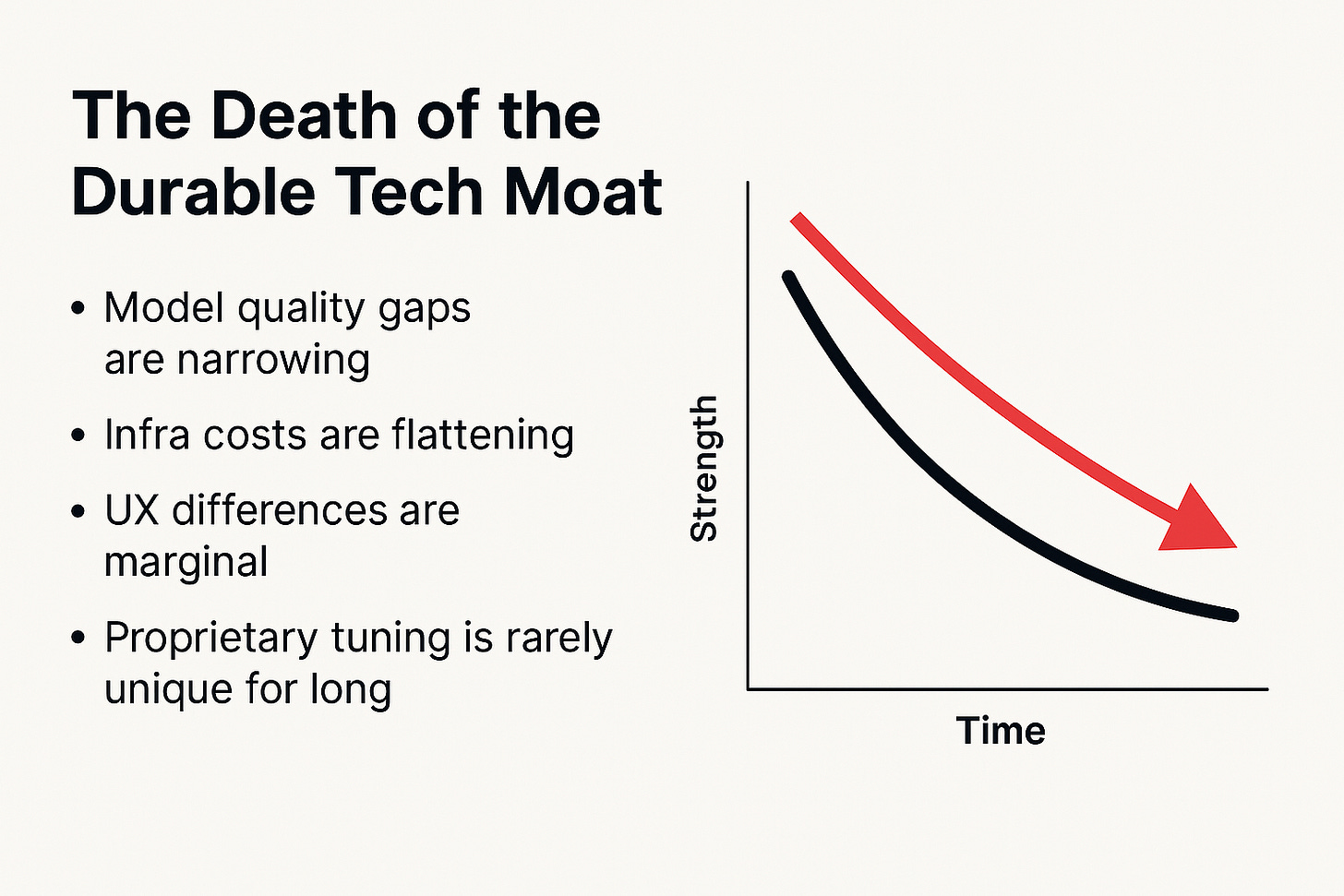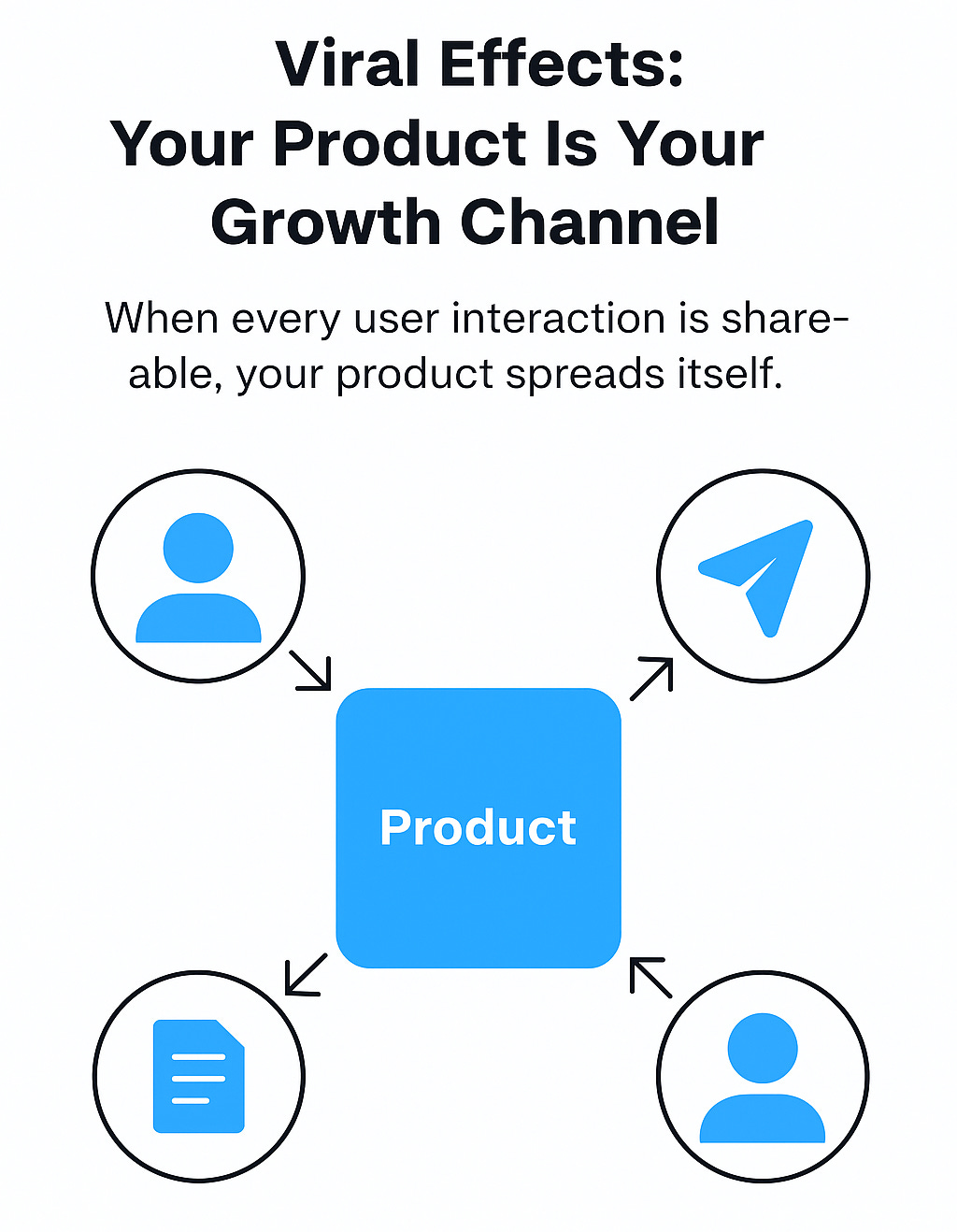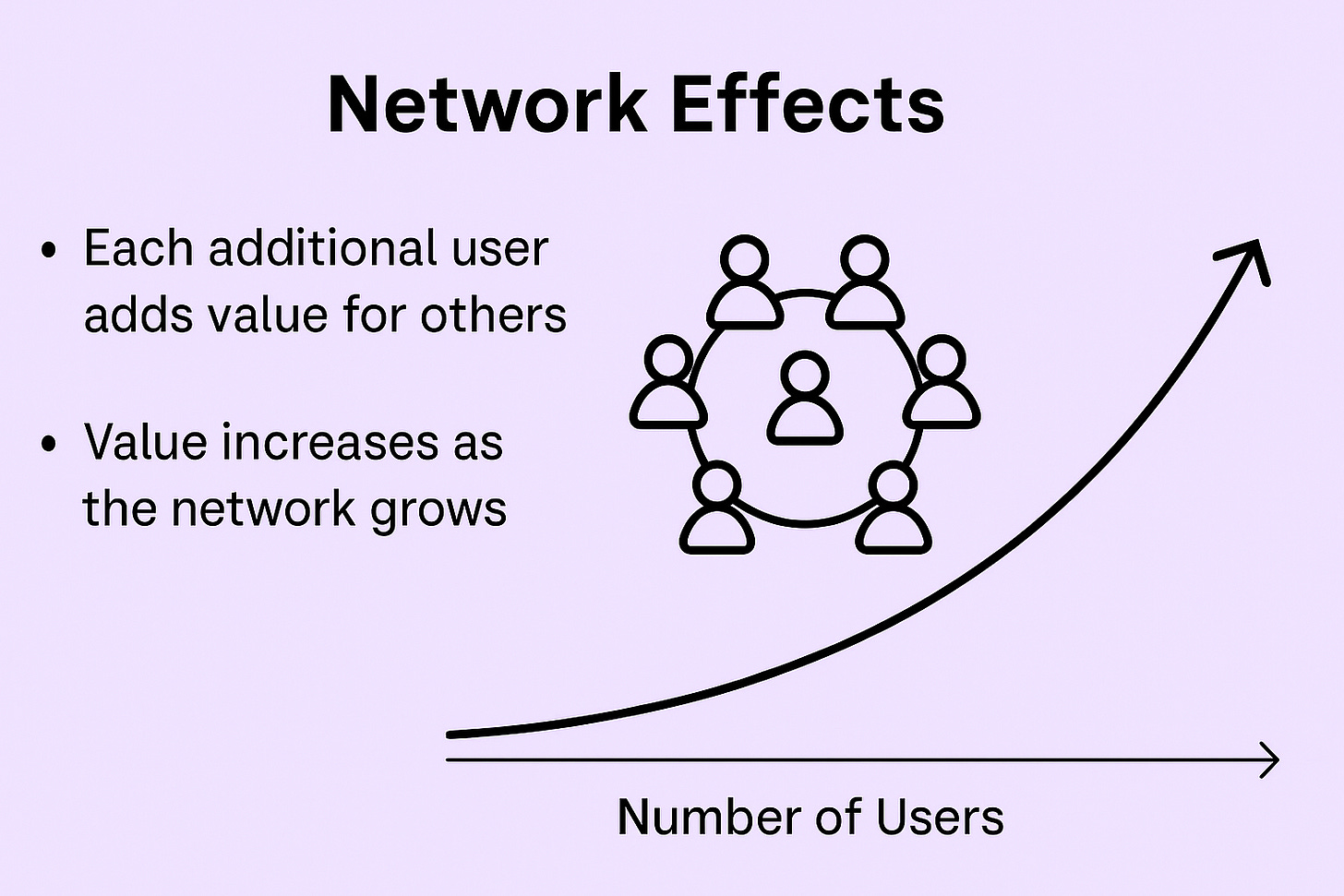In AI, GTM Is the Only Moat That Lasts
In a world of commoditized models, your only edge is motion that compounds
In the early days of SaaS, building a great product bought you time.
Your edge might last a few years. Even in competitive markets, your stack, features, and integrations formed a moat.
But in the age of AI?
A novel feature can be replicated in six weeks.
Maybe less.
Foundation models are public. APIs abstract away complexity.
Open-source moves faster than most product roadmaps.
Every startup now races on the same track—with the same components.
So where’s the edge?
It’s no longer in how smart your model is.
It’s in how fast your business compounds.
The Death of the Durable Tech Moat
The technical moat is shrinking across the board:
Model quality gaps are narrowing
Infrastructure costs are flattening
UX differences are marginal
Proprietary tuning is rarely unique for long
Even if you fine-tune something powerful today, someone else can ship a 90% replica next month—at half your price.
Which means defensibility no longer comes from what you build, but from how you distribute, how you retain, and how your product improves with usage.
GTM is no longer downstream of product.
It is the product strategy.
Viral Effects: Your Product Is Your Growth Channel
In the old model, growth came from paid acquisition.
In the new model, the product grows itself.
When every user interaction creates something visible, shareable, or collaborative, your product becomes a distribution engine.
This is happening everywhere:
A video generated in Luma AI gets posted and viewed by 100,000 people
An AI sales email from Clay reaches 50 prospects with the product link in the signature
A collaborative doc from Notion AI invites five new teammates into the workspace
A deck built in Gamma gets embedded and reshared across companies
If usage leads to exposure—and that exposure leads to new usage—you’ve created a zero-CAC loop.
This is viral GTM.
And it’s not just for consumer apps.
Even infrastructure tools can build it in:
Shareable exports
Embeddable visualizations
Public galleries or leaderboards
Collaborative flows that trigger invitations
Virality is now a product decision, not just a marketing one.
Network Effects: The Product Learns as It Grows
If virality is what gets new users in, network effects are what make them stay.
In AI, network effects take on a new dimension.
It’s not just “more users = more value.”
It’s “more usage = a smarter product for everyone.”
When every interaction feeds data back into the system—and the system uses that data to improve for future users—you’re no longer just building a tool.
You’re building a flywheel.
Think of:
Character.AI, where every conversation shapes evolving model behavior
Zeer AI, where your GTM assets train an always-learning, buyer‑centric AI agent that autonomously engages, qualifies, and adapts to buyer needs
You.com, where interactions continuously refine search and agent output
Clay, where community-enriched workflows improve with each shared integration
The more your product is used, the more defensible it becomes.
That’s the new network effect.
It’s not just “who has more data.”
It’s who turns user behavior into product leverage—in real time.
The AI GTM Moat Blueprint
To lead in this new environment, you don’t just need better performance.
You need better motion.
Here’s how companies are building GTM moats that actually last:
Product-Led Foundations
Frictionless first use
Instant value (without sales)
Built-in collaboration or sharing
Fast onboarding to fast outcomes
Viral Loops
Outputs that get reposted, embedded, or shared
Branded exports, links, or “created with…” trails
Features that spread the product as they’re used
Data Flywheels
Every user interaction improves the product
Personalization that compounds with scale
Behavior-based defaults, tuned from the network
Value that accumulates, not resets
GTM-Aware Design
Specific, narrow use cases (not broad tech demos)
Distribution channels built into the user journey
Narratives that lead with outcomes, not features
Systems that scale with leverage, not headcount
Final Thought: The Moat Is in the Motion
Every AI company looks differentiated at first.
But six months in, the model edge erodes.
The only thing that compounds?
Your go-to-market system.
If your product spreads for free, your CAC drops.
If your product learns from use, your LTV grows.
If your GTM is intentional, your category presence becomes unshakable.
Moats built in code fade.
Moats built in motion endure.
You won’t win because your AI is slightly smarter.
You’ll win because your company compounds faster than anyone else.





